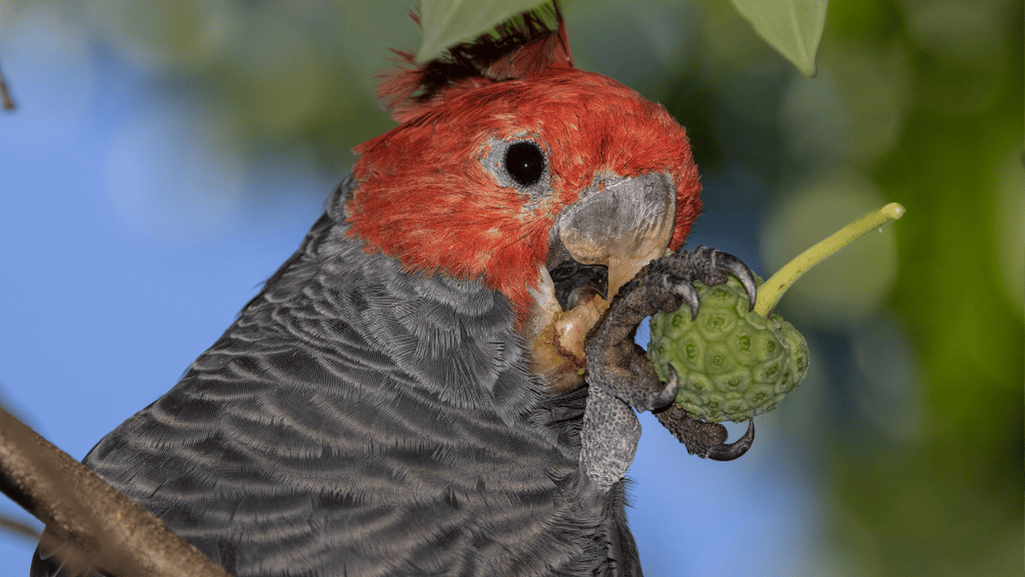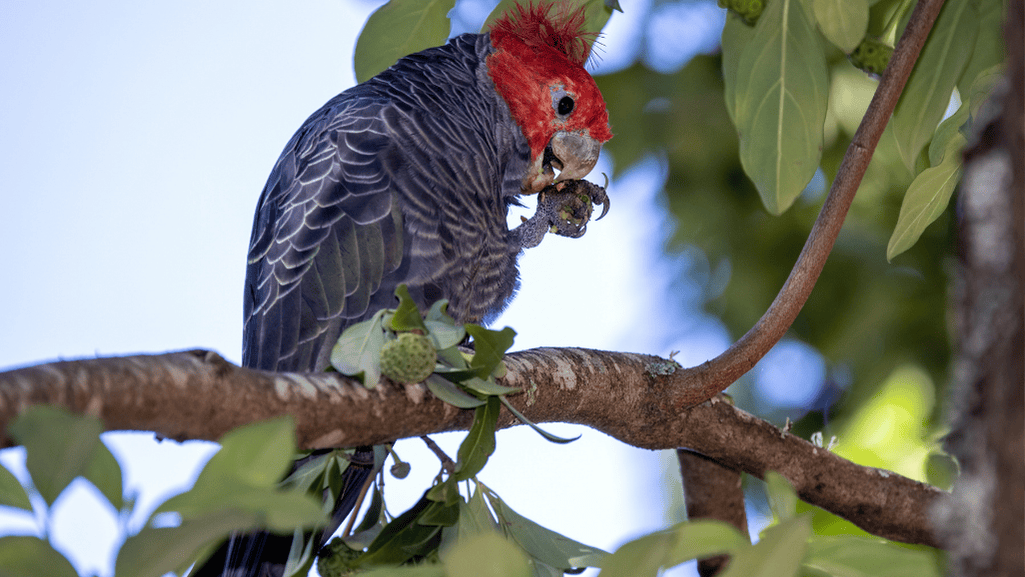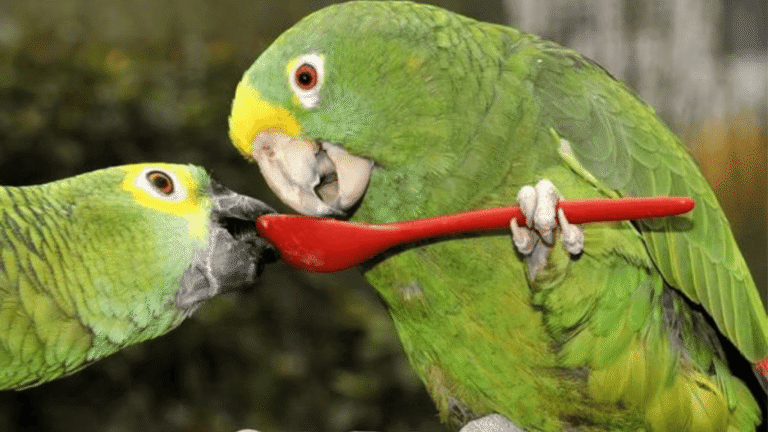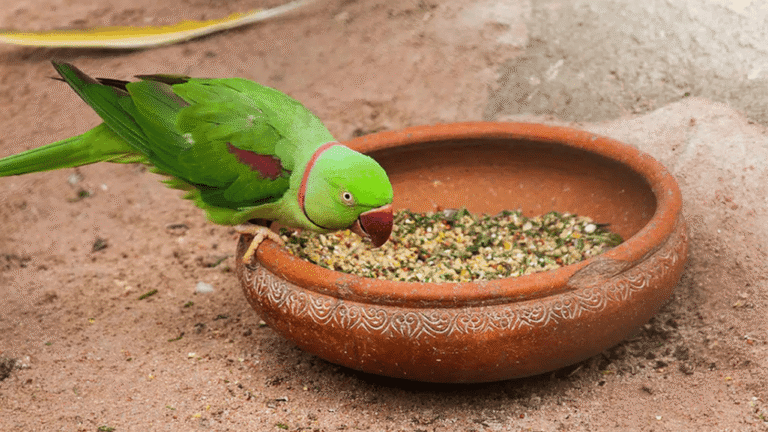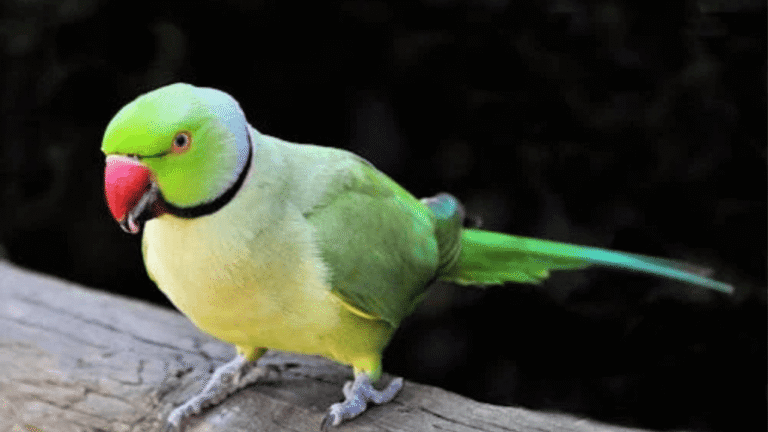The gang gang cockatoo is a special bird in the Australian parrot family. It has unique plumage and charming traits. But, it’s facing big challenges, making bird conservation key to its survival as an endangered species.
Gang gangs are known for their unique sounds. They make creaking calls and the sound of falling gum nuts. Their range was hit hard by the Black Summer bushfires, making them more vulnerable. Over 20 years, their numbers have dropped by about 25% due to these fires.
Groups like the Eurobodalla Shire Council are working hard to save gang gang cockatoos. They’re building nest boxes and spreading the word about these birds’ struggles. Their goal is to ensure a bright future for the species.
Key Takeaways:
- The gang gang cockatoo is a unique Australian parrot known for its distinctive appearance and behavior.
- Gang gangs are often identified by their creaking calls and the sound of falling gum nuts.
- The species’ range corresponds with the Black Summer bushfires, leading to an upgrade in conservation status to Vulnerable.
- Gang gang cockatoo populations have declined over the past two decades, with bushfires further impacting their numbers.
- Conservation efforts, such as building nest boxes and raising awareness, are crucial for protecting gang gang cockatoos.
Introduction to the Gang Gang Cockatoo
Get ready to fall in love with the Gang Gang Cockatoo, a bird from Australia that has won many hearts. Known scientifically as Callocephalon fimbriatum, it’s a standout among Australia’s birds. Their looks and behavior make them a favorite among bird lovers and nature enthusiasts.
Overview of the Gang Gang Cockatoo
Gang Gang Cockatoos live in southeastern Australia and are medium in size. They have a grey coat and a red head and crest for males. Despite being popular, they are still not well-studied, making them even more intriguing.
Studies show their numbers have dropped by 69% in three generations. This has made them vulnerable. The 2019-2020 bushfires in Australia made things worse, affecting 18% of their habitat.
| Characteristic | Details |
|---|---|
| Size | 33-35cm (12.8-13.6 in) |
| Weight | 240-330g (8.4-11.5 oz) |
| World Population | Unknown, decreasing |
| IUCN Red List Status | Vulnerable |
Unique characteristics of the species
Gang Gang Cockatoos have traits that make them special. They eat eucalyptus seeds and introduced fruits like Hawthorn. They also eat sawfly larvae, showing they’re adaptable and clever foragers.
Originally, they lived as far south as King Island, off Tasmania’s northwest coast. But, habitat loss has limited their range. Still, they’ve gained a lot of attention, even ranking third in a Bird of the Year poll.
“The Australian Capital Territory’s decision to adopt the Gang Gang Cockatoo as its official emblem in 1997 underscores the species’ cultural and ecological significance. It serves as a reminder of our responsibility to protect and conserve these remarkable birds for generations to come.”
As we explore the Gang Gang Cockatoo’s world, let’s learn and protect them. By understanding their traits, behavior, and challenges, we can help ensure a future for these amazing Australian birds.
Scientific Classification and Taxonomy
The Gang-gang Cockatoo, known scientifically as Callocephalon fimbriatum, is a unique parrot species. It belongs to the Psittacidae family, which includes many fascinating cockatoos and parrots. This family adds to the rich variety of birds in our world.
The Gang-gang Cockatoo falls under the subfamily Cacatuinae. This group includes the beautiful cockatoos and their relatives. It shows the special traits and history the Gang-gang Cockatoo shares with other cockatoos in the Psittacidae family.
Scientists have always agreed on the Gang-gang Cockatoo’s place in their studies. Databases like Avibase, Birdlife checklist, and IOC World Bird Names have all confirmed its classification. They have done this for many years and editions.
In Australia, the Gang-gang Cockatoo is a special bird. It is part of the country’s unique bird life. Its presence adds to the variety of parrots found in Australia.
| Taxonomic Level | Classification | Key Statistics |
|---|---|---|
| Order | Psittaciformes | 151 pictures, 1 specimen, 14 sounds |
| Family | Psittacidae | 151 pictures, 1 specimen, 14 sounds |
| Subfamily | Cacatuinae | 11 pictures, 1 sound |
The name Callocephalon fimbriatum describes the Gang-gang Cockatoo’s unique looks and classification. This name helps identify it from other cockatoos and parrots in the Psittacidae family.
The Gang-gang Cockatoo’s taxonomic classification shows its importance in the world of parrots and cockatoos. It highlights its role in avian biodiversity and its status as an endemic treasure of Australia.
Physical Characteristics and Appearance
The gang-gang cockatoo is a bird that catches the eye with its unique look. It has red-crested cockatoo features, with a gray body and a bright red head. This makes it stand out among Australian parrots.
Distinctive features of the Gang Gang Cockatoo
The gang-gang cockatoo is known for its mohawk-like crest. This crest, along with its bright red head, has earned it the nickname “red-headed cockatoo.” Adult males weigh between 230-334 grams and are 32–37 cm (13–15 in) long. They also have a wingspan of 62–76 cm (24–30 in).
Sexual dimorphism in the species
Sexual dimorphism is clear in gang-gang cockatoos. Males have a vibrant red head and crest, while females have a darker, grayer head with a smaller crest. This contrast makes the species even more appealing.
Plumage variations and color patterns
The gang-gang cockatoo’s plumage is a mix of colors and patterns. Its body feathers are mostly gray, which highlights the red head and crest. Females have yellow-orange barring on their breast and belly, making them different from males. Young gang-gang cockatoos look like adult females, except young males have a red crown and forehead.
| Feature | Male | Female |
|---|---|---|
| Head and crest color | Bright red | Dark grey with pink and yellow edging |
| Body feathers | Gray | Gray |
| Breast and belly feathers | Gray | Yellow-orange barring |
| Young birds | Red crown and forehead | Resemble adult females |
The gang-gang cockatoo’s unique plumage and striking sexual dimorphism make it captivating. Its red crest and head, against the gray body, create a visual spectacle. This continues to fascinate bird lovers and researchers.
Habitat and Distribution
The Gang-gang Cockatoo is a beloved Australian native bird. It is found in the southeastern parts of the continent. Bird lovers are drawn to its unique look and charming ways. The bird’s home range was hit hard by the Black Summer bushfires, making conservation key for its survival.
Natural Range of the Gang-gang Cockatoo
Gang-gang Cockatoos live in a small area in southeastern Australia. They are seen from Coffs Harbour to Mudgee in New South Wales. They also exist in parts of Victoria, the Australian Capital Territory, and Kangaroo Island in South Australia.
They used to be on King Island in Tasmania but are no longer there. The Gang-gang Cockatoo’s home covers about 400,000 km². In New South Wales, they are found along the southeastern coast and highlands.
They have been spotted in places like Scone and Myall Lakes too. Their home in New South Wales stretches from the lower Hunter to the Southwestern Slopes.
Preferred Habitats and Ecosystems
The Gang-gang Cockatoo loves certain places to live. They prefer tall eucalyptus forests and woodlands. In summer, they stay in wet sclerophyll forests. In winter, they move to more open eucalypt areas.
These habitats give them everything they need to survive. They have a variety of plants to eat. The Gang-gang Cockatoo eats plants from 25 families, including 131 species.
| State/Territory | Distribution |
|---|---|
| New South Wales | Southeastern coast and highlands, lower Hunter to northern Blue Mountains and Southwestern Slopes |
| Victoria | Parts of the state |
| Australian Capital Territory | Present |
| South Australia | Kangaroo Island |
| Tasmania | Historically on King Island, but no longer present |
Habitat loss is a big threat to the Gang-gang Cockatoo. In eastern New South Wales, 58% of their home has been lost. In the inland slopes, 84% is gone. Saving their habitats is vital for their survival.
Behavior and Social Structure
The Gang-gang Cockatoo’s behavior and social structure are fascinating. They have captured the attention of researchers and bird enthusiasts. These birds show a range of social dynamics, vocalizations, and foraging habits. They demonstrate their adaptability and resilience in their native habitats.
Flocking Behavior and Social Dynamics
Gang-gang Cockatoos form small flocks or pairs. These groups show the importance of social interaction in their lives. Nesting pairs even help neighboring pairs, showing their cooperative nature.
Vocalizations and Communication
Gang-gang Cockatoos have unique vocalizations. Their calls sound like creaking, growling, or a cork being pulled. These sounds help them communicate within flocks, keeping them connected.
“Gang-gang Cockatoos have a specialized diet that includes a variety of native fruits and nuts, such as the casuarina nut and Geebung bush fruits, to prevent feather plucking.”
Foraging Habits and Diet Preferences
Gang-gang Cockatoos eat seeds, fruits, nuts, and insects. Their foraging habits show their adaptability. They also eat insects and their larvae, like sawfly larvae, showing their opportunistic behavior.
| Cockatoo Species | Foraging Behavior |
|---|---|
| White Cockatoos | Mix of ground grazing and tree feeding, spending a significant portion of their day foraging |
| Black Cockatoos | More complex foraging behavior, communicating clearly during flight and eating with deliberate purpose |
| Pink Cockatoos (Galahs and Major Mitchell) | Share behavioral characteristics with Black and White Cockatoos, spending many hours feeding on grass seeds and other native foods |
Understanding Gang-gang Cockatoo behavior is key for their conservation and care. By studying their social dynamics, vocalizations, and foraging habits, we learn about their ecological roles. This knowledge helps us develop effective strategies for their care and management.
Breeding and Reproduction
The Gang-gang Cockatoo’s breeding season is a captivating display of nature’s wonders. These magnificent birds engage in intricate courtship rituals and dedicate themselves to raising their young. As the breeding season approaches, typically from October to January, male Gang-gangs begin to showcase their elaborate courtship behaviors to attract a mate.
These displays include mesmerizing vocalizations, crest-raising, wing-flapping, and head-bobbing. All these are designed to impress potential partners and establish strong pair bonds.
Once a pair has formed, they engage in tender moments of mutual preening and feeding. This strengthens their bond before embarking on the journey of parenthood. The female Gang-gang Cockatoo carefully selects a suitable tree hollow, where she will lay a clutch of 2-3 precious eggs.
Both parents take on the responsibility of incubation, taking turns to keep the eggs warm and safe for approximately 27-30 days. This is a testament to their unwavering commitment to their future offspring.
As the chicks hatch, the dedicated parents work tirelessly to provide for their needs. For the next 7-8 weeks, the chicks are entirely dependent on their parents for sustenance and protection. The parents’ instinctive drive to nurture and care for their young is truly awe-inspiring.
They tirelessly forage for food and return to the nest to feed their growing chicks. This period of intensive parental care is crucial for the chicks’ development, ensuring they grow strong and healthy before fledging the nest.
Courtship Rituals and Pair Bonding
During the breeding season, male Gang-gang Cockatoos engage in captivating courtship displays. These rituals are a true spectacle to behold, as the males put on a show of vocalizations, crest-raising, wing-flapping, and head-bobbing. The intricacy and beauty of these displays serve as a testament to the importance of pair bonding in Gang-gang Cockatoo society.
Once a pair has formed, they engage in intimate moments of mutual preening and feeding. These tender interactions not only reinforce their connection but also serve as a means of communication and trust-building. The strong pair bond formed during the courtship phase is essential for the challenges that lie ahead.
“The courtship rituals of Gang-gang Cockatoos are a mesmerizing display of nature’s artistry, as the males put on a captivating show to win the affections of their potential mates.” – Dr. Emily Robinson, Avian Behaviorist
Nesting Habits and Egg-Laying
Once a pair has formed a strong bond, they begin the search for the perfect nesting site. Gang-gang Cockatoos are cavity nesters, meaning they seek out suitable tree hollows to lay their eggs and raise their young. The female takes the lead in selecting the ideal location, carefully inspecting potential sites for safety, security, and proximity to food sources.
Once a suitable hollow is found, the pair works together to prepare the nest. They line it with soft materials to create a cozy and protective environment for their eggs. The female Gang-gang Cockatoo typically lays a clutch of 2-3 eggs, which are incubated by both parents for approximately 27-30 days.
During this time, the parents take turns sitting on the eggs, ensuring they receive the necessary warmth and protection to develop properly. The shared responsibility of incubation is a beautiful example of the strong partnership and cooperation between Gang-gang Cockatoo pairs.
The breeding habits of Gang-gang Cockatoos are a fascinating aspect of their life cycle. They showcase the intricacies of avian ecology and the importance of suitable nesting sites for the success of their reproduction.
Parental Care and Chick Development
Once the eggs hatch, the Gang-gang Cockatoo parents face the demanding task of caring for their helpless chicks. For the first 7-8 weeks, the chicks are entirely dependent on their parents for food, warmth, and protection. The parents work tirelessly to provide for their offspring, making frequent foraging trips to gather nutritious food and returning to the nest to feed the hungry chicks.
The chicks develop rapidly during this period, growing from tiny, naked hatchlings to fully feathered fledglings. The parents’ dedication and attentiveness play a crucial role in ensuring the chicks receive the necessary nutrients and care to develop properly. As the chicks grow stronger and more independent, they begin to venture out of the nest, gradually learning the skills they need to survive on their own.
| Breeding Stage | Duration |
|---|---|
| Incubation Period | 27-30 days |
| Chick Dependency Period | 7-8 weeks |
| Fledging Age | 12-14 weeks |
Studying Gang-gang Cockatoo breeding behavior and ecology is essential for understanding population dynamics and implementing effective conservation measures. By gaining insights into their courtship rituals, nesting habits, and parental care, researchers can develop targeted strategies to protect and conserve these fascinating birds and their habitats.
The breeding season of Gang-gang Cockatoos is a time of wonder, dedication, and the continuation of life. From the captivating courtship displays to the tireless efforts of devoted parents, every stage of the breeding cycle is a testament to the resilience and beauty of these remarkable birds.
Conservation and Threats
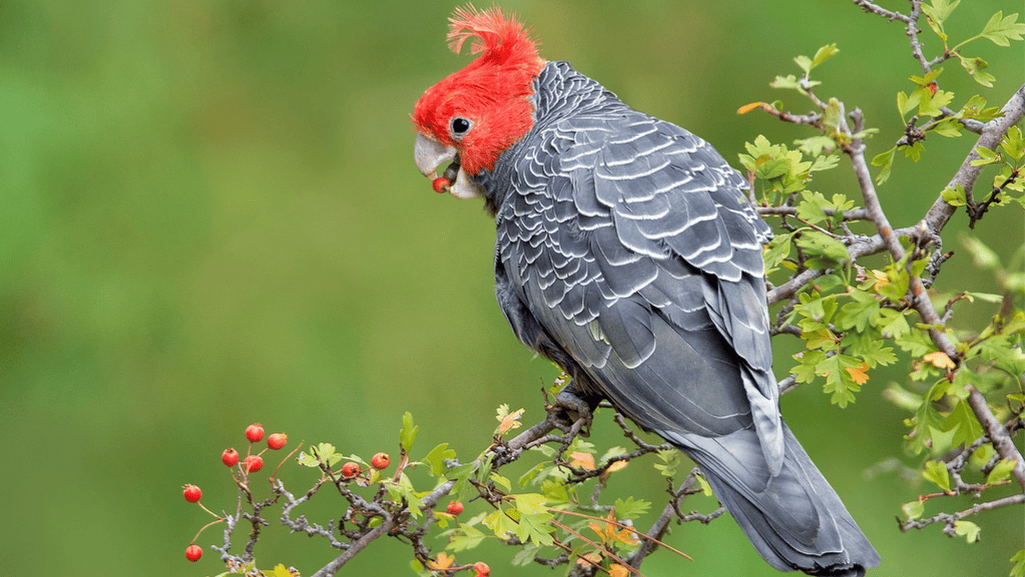 The Gang-gang Cockatoo, once thriving in Australia, now faces big challenges. It has been moved from Least Concern to Vulnerable. This shows we need urgent conservation efforts to save this endangered bird.
The Gang-gang Cockatoo, once thriving in Australia, now faces big challenges. It has been moved from Least Concern to Vulnerable. This shows we need urgent conservation efforts to save this endangered bird.
Current conservation status and threats
The Gang-gang Cockatoo’s numbers have dropped sharply in recent years. The 2019-20 bushfires hit 36% of their range hard. This led to a 21% drop in their numbers.
Climate change and heatwaves will make things worse. This puts a lot of pressure on their survival.
The Australian government has listed the Gang-gang Cockatoo as endangered. This means they are at high risk of disappearing. The government will now assess any big changes that could harm them more.
Impacts of habitat loss and fragmentation
Habitat loss and fragmentation are big threats. The loss of nesting hollows has hurt their ability to reproduce. Urbanization, land clearing, and forestry have destroyed their homes.
| Region | Reporting Rate Decline (1977-1981 to 1998-2001) |
|---|---|
| Australian Alps | 49% |
| NSW South Western Slopes | 67% |
| Sydney Basin | 57% |
| South East Corner | 44% |
| South Eastern Highlands | 22% |
The Atlas of Australian Birds shows the decline in Gang-gang Cockatoo populations. While some areas saw increases, the overall trend is worrying.
Conservation efforts and initiatives
Many efforts are underway to save the Gang-gang Cockatoo. The Eurobodalla Shire Council has built nest boxes for them. These boxes help in areas where natural hollows are scarce.
The ACT government is leading national efforts to save the Gang-gang Cockatoo. They have funding to create a national working group. This group will work on protecting habitats, monitoring populations, and raising awareness about bird conservation.
“The Gang-gang Cockatoo is a true gem of the Australian bird world, and we must do everything in our power to ensure its survival for generations to come.” – Dr. Sarah Johnson, BirdLife Australia
We must keep working to save the Gang-gang Cockatoo from extinction. By preserving habitats, raising awareness, and using effective strategies, we can help this remarkable species thrive.
Gang Gang Cockatoos as Pets
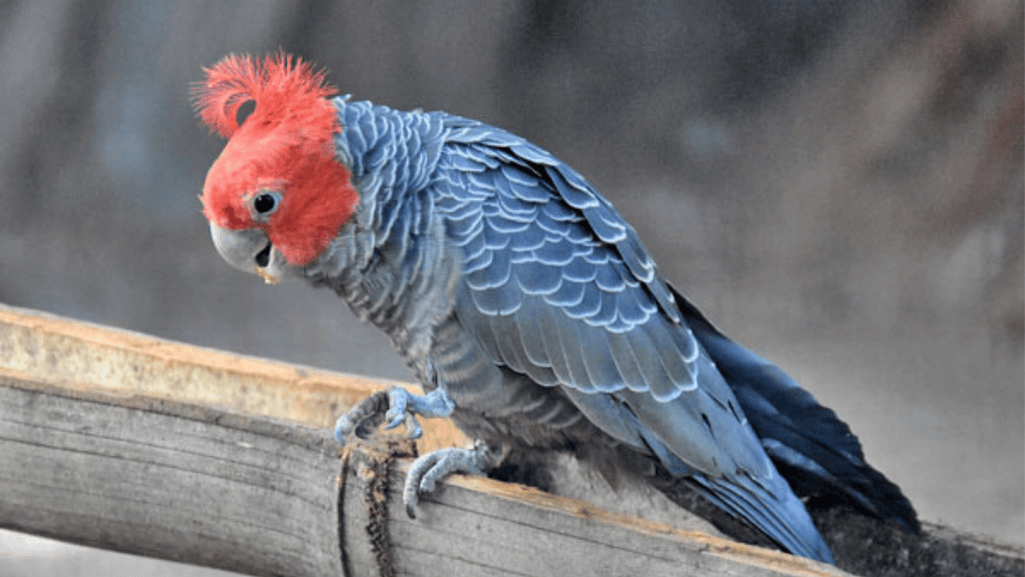 Keeping Gang Gang Cockatoos as pet cockatoos is a big decision. They are unique and captivating, but they have specific needs. Prospective owners must research these needs and prepare a suitable environment.
Keeping Gang Gang Cockatoos as pet cockatoos is a big decision. They are unique and captivating, but they have specific needs. Prospective owners must research these needs and prepare a suitable environment.
Gang Gangs are known for their aggressive nature. This can make them challenging pets. They need specialized cockatoo care to prevent problems like feather plucking.
Providing enough space, enrichment, and daily interaction is key. This is crucial for their mental and physical health.
| Characteristic | Details |
|---|---|
| Adult Size | 13″–14.5″ |
| Life Expectancy | Up to 27 years |
| Price Range (US) | $1,000–$1,400 |
| Minimum Cage Size | 36″ W x 24″ D x 48″ H |
| Sleep Requirements | 10–12 hours per day |
| Out-of-Cage Playtime | 3 to 4 hours daily |
Gang Gangs are rare outside of Australia. They can be expensive, with prices from $1,000 to $1,400 in the US. Owners should be ready for a long-term commitment, as they can live up to 27 years.
Gang Gangs enjoy a varied diet including pellets, fresh fruits, vegetables, almonds, filberts, and macadamias. They should be fed approximately 1/3 cup of formulated diet, 1/3 cup of fresh fruits and vegetables, and two or three nuts daily.
The allure of owning a Gang Gang Cockatoo is understandable. However, it’s crucial to prioritize their conservation. Protecting their natural habitats and raising awareness about their unique characteristics is key. This way, these remarkable avian pets can thrive in their native range for generations to come.
Conclusion
The Gang-gang Cockatoo is a remarkable bird from Australia. It has a slate-gray body and the male’s red head and crest. This makes it a standout among Australian birds.
Its population is declining, which is a big worry. Habitat loss and other threats are harming it. We need to act fast to help this bird.
By supporting research, we can learn more about the Gang-gang’s needs. This knowledge helps us create better conservation plans.
Let’s keep exploring and enjoying Australia’s bird life. The Gang-gang Cockatoo reminds us of nature’s beauty and fragility. We can help by spreading awareness and supporting conservation.
In conclusion, the Gang-gang Cockatoo is a treasure in Australia’s wildlife. We must protect it and learn more about it. By working together, we can keep its call alive in Australia’s forests.
So, let’s cherish the Gang-gang Cockatoo and all Australian birds. We should aim for a future where they can live and thrive for many years.


